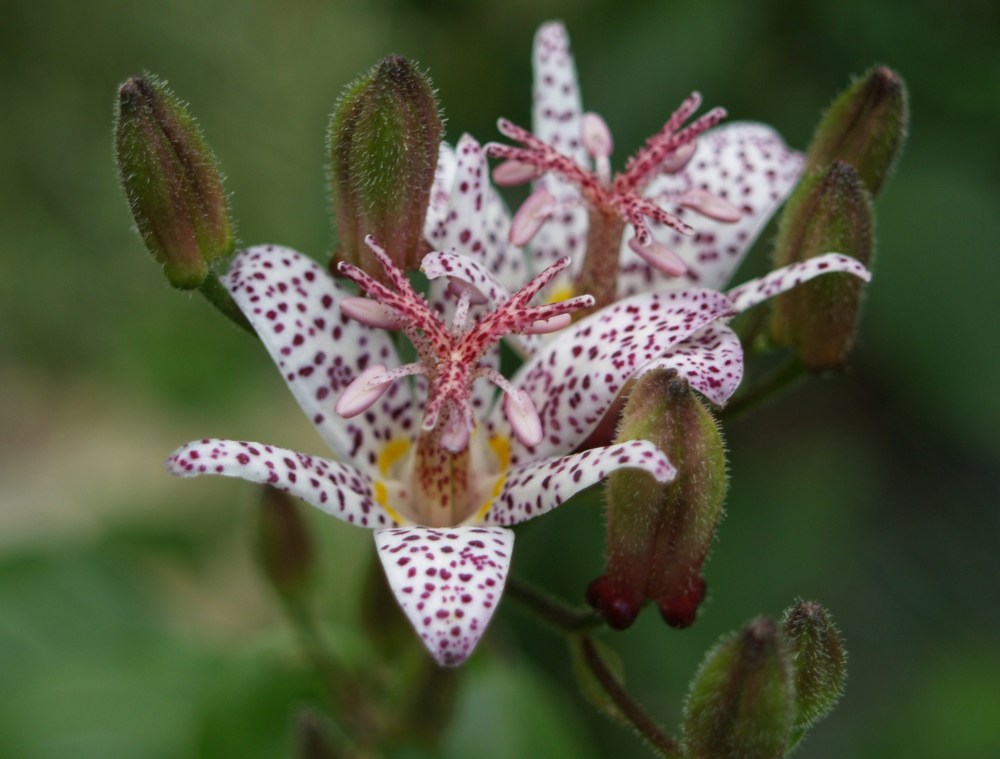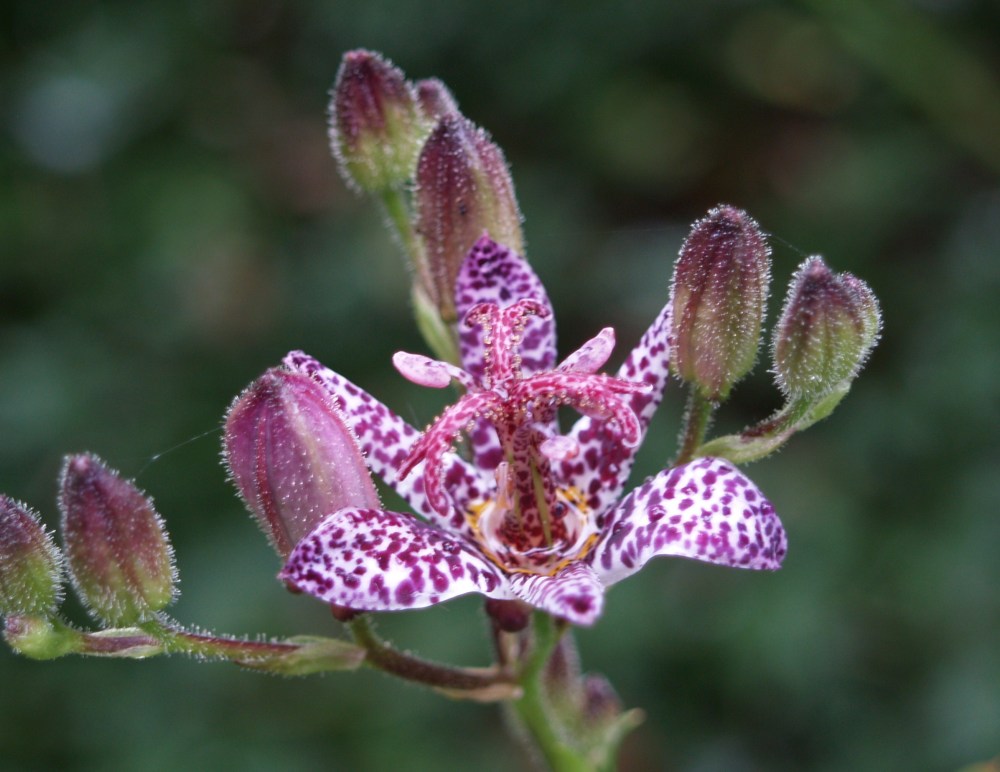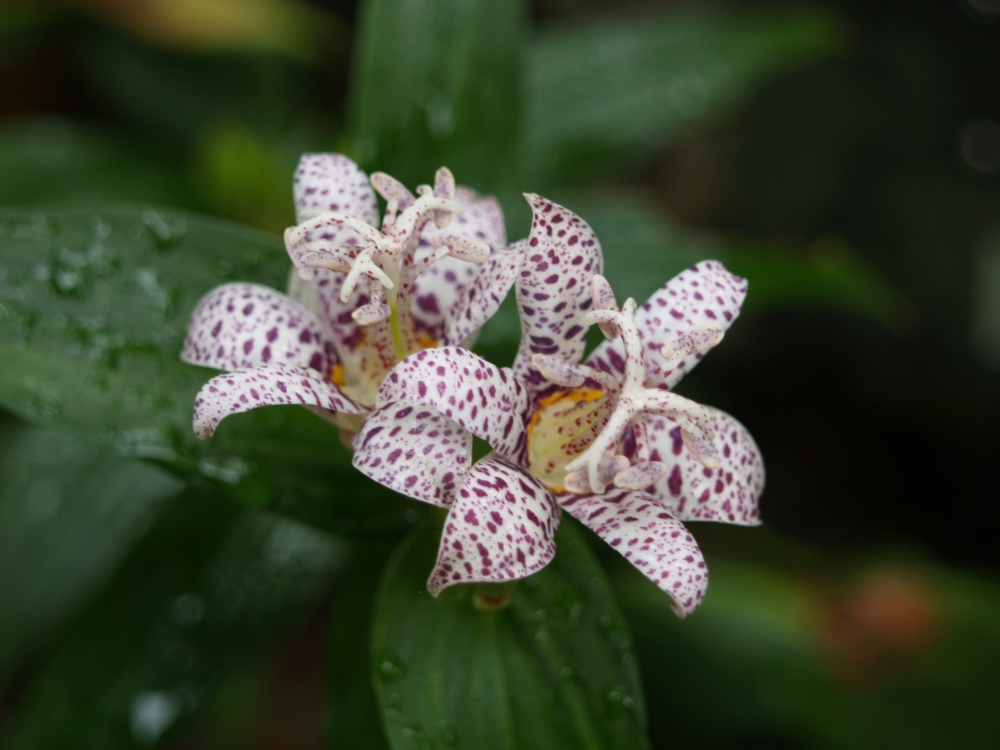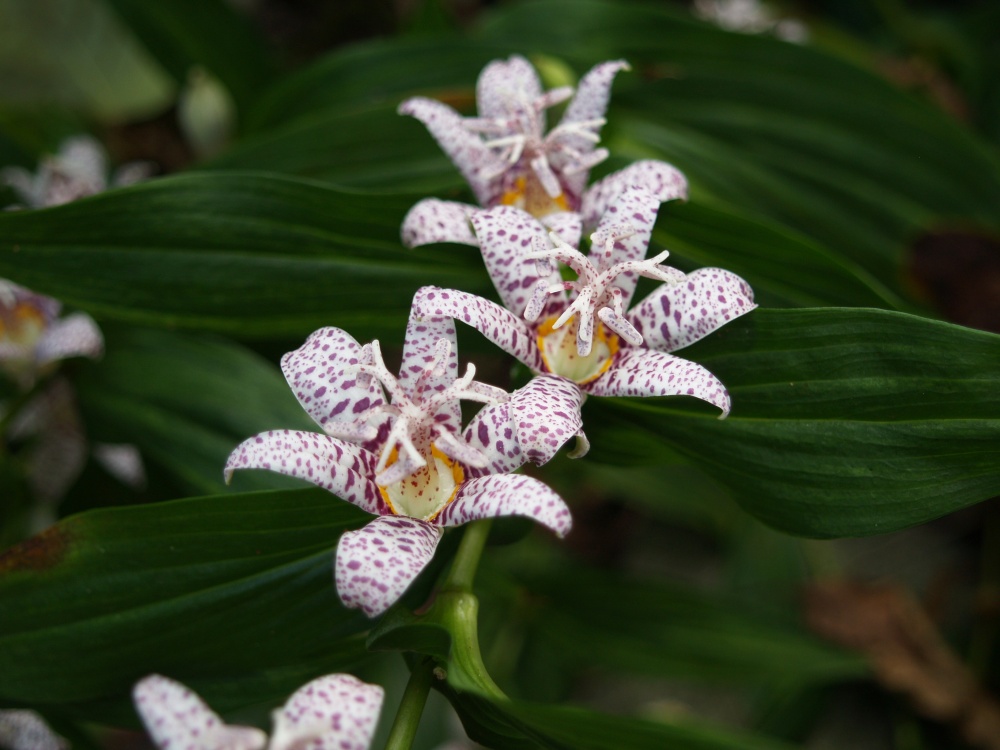My wife asserts that there are far too many plants in the garden already, and how can I possibly consider planting more? Yes, the paths are blocked by hostas and nandinas flopping about, and now exuberant hydrangeas and sharp spined mahonias have obstructed another. And, the roses must be cut back severely in the spring or the black stone steps that lead to the back patio are impassable.
The creeping Blue Star (Isotoma fluviatilis, with tiny round leaves and pale blue flowers) has grown comfortable enough along the shady paths to blanket the large stone slabs, and thyme (Thymus) and Creeping Jenny (Lysimachia nummularia ‘Aurea’) do the same in partial sun. An assortment of gold leaf and variegated ivies are pruned occasionally, or other paths would have disappeared years ago.
So, point well taken, but, but, but …. she hasn’t been out in the garden for weeks, and if she had been would certainly have to admit that there’s adequate space for more toad lilies. Just look a them, lush foliage without a hint of stress from the awful summer, and covered in marvelous blooms. There’s room for several, at least. They’re well mannered, they don’t encroach on their neighbors, and though they’re planted near the paths, they don’t flop or seed themselves about, and are a perfectly pleasant sort.
I am only slightly embarrassed that I cannot recall all of the cultivars of toad lilies (Tricyrtis) in the garden, but all are splendid in bloom in late summer and early autumn, and I have not grown one that I wouldn’t highly recommend.
Earlier in the spring I planted one of the yellow flowering types, and now I can’t remember which, but it was rather small and spindly at the time (as new plants often are), and I must have walked the path past it dozens of times without thinking to stop to give the poor soul a drink. It had no chance in the face of early and prolonged heat, and so I will try another, and maybe several yellow bloomers again next spring.
Of course, this minor failure could happen to any new plant neglected to such a degree, and otherwise I am confident in recommending that toad lilies require no special care, no spraying for bugs or deer, no attention to deadheading, pruning, or fertilizing. Toad lilies insist that you wait until late summer to enjoy their blooms, but once the season has arrived, the blooms are incomparable, though not particularly showy from a distance.
I marvel at the unique architecture of the flowers that requires bumblebees to squeeze beneath the anthers with some effort so that the transfer of the sticky pollen is assured. The mottled coloring (usually a white background with a blending of yellow along the throat, with prominent purple spots) is exquisite, and is said to be the origin of its common name, though the toads in my garden are not spotted in such a grand fashion.
In the extreme heat this summer only one cultivar, the loosely branched though not quite floppy ‘Sinonone’ bloomed in mid August, with ‘Miyazaki’, ‘Gilt Edge’ and others barely showing a bud until early in September, a week or two later than is usual. The buds of many toad lilies are arranged at leaf nodes along the stem, and begin to bloom at the tips and then progress to the middle. Each bloom will last for a week if the temperatures are cool, and a two year old toad lily will be in bloom for a month or longer.
The flowers are quite small, and make little impact from more than a few paces away, so toad lilies should be located where they can be enjoyed at close range. If you are concerned with soiling your knees as you stoop to peruse the blooms, I would recommend planting them in a mostly sunny to partially shady spot beside a patio or path. While there is no danger that your toad lilies will become unruly and flop over the path, I caution that you could become hopelessly enthralled and obsessed with collecting as many cultivars as you can find.
Toad lilies look almost exotic to me. They are a beautiful flower, albeit rather small. I happen to like the leaves as well. Their form is so delicate and graceful in a garden full of color and mass.
I must have a different variety, because mine are floppers. I’ve had to put stakes around them to hold them up. But I love them, I’m thinking of adding more also. 🙂